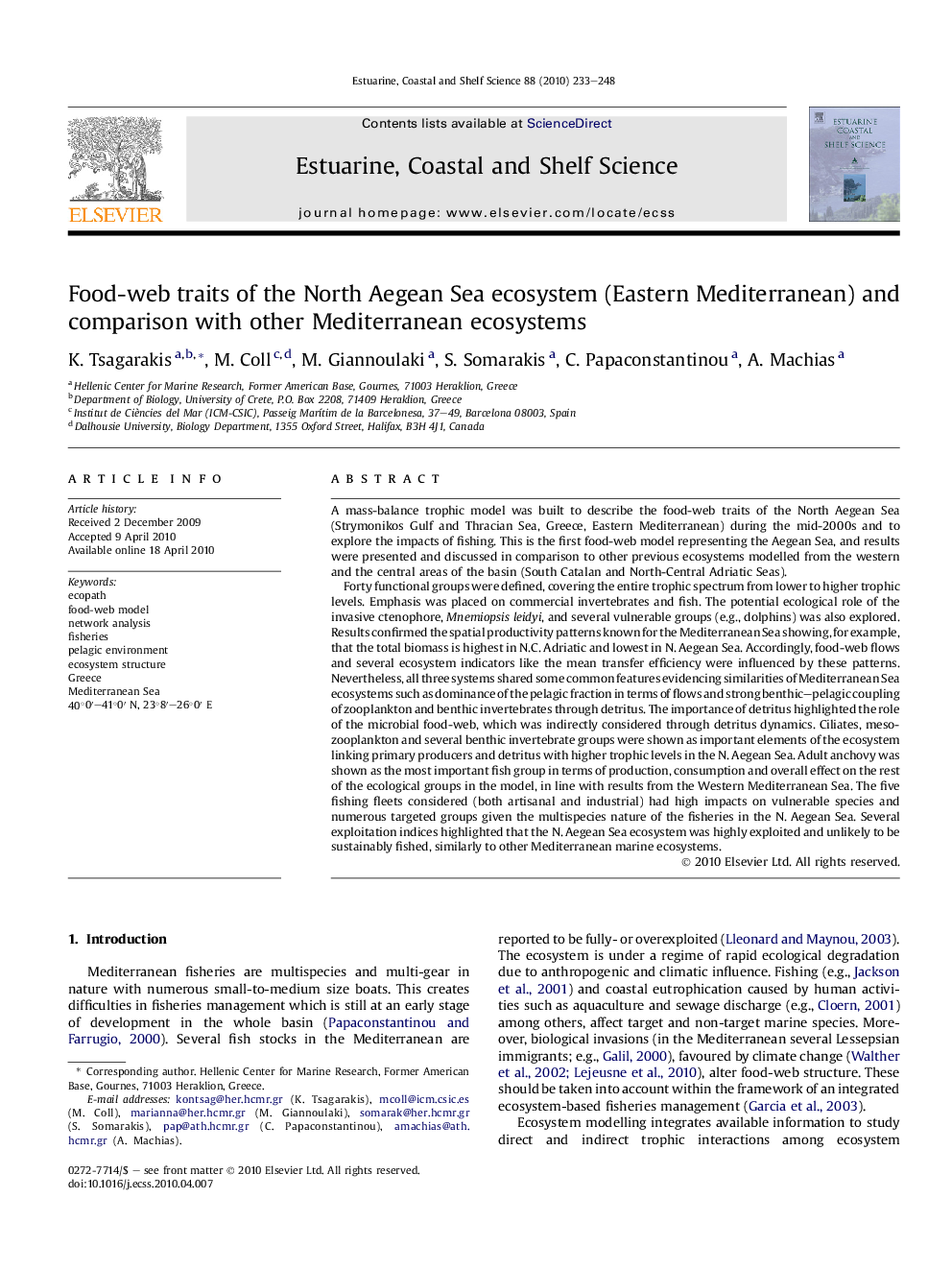| کد مقاله | کد نشریه | سال انتشار | مقاله انگلیسی | نسخه تمام متن |
|---|---|---|---|---|
| 4540947 | 1326700 | 2010 | 16 صفحه PDF | دانلود رایگان |

A mass-balance trophic model was built to describe the food-web traits of the North Aegean Sea (Strymonikos Gulf and Thracian Sea, Greece, Eastern Mediterranean) during the mid-2000s and to explore the impacts of fishing. This is the first food-web model representing the Aegean Sea, and results were presented and discussed in comparison to other previous ecosystems modelled from the western and the central areas of the basin (South Catalan and North-Central Adriatic Seas).Forty functional groups were defined, covering the entire trophic spectrum from lower to higher trophic levels. Emphasis was placed on commercial invertebrates and fish. The potential ecological role of the invasive ctenophore, Mnemiopsis leidyi, and several vulnerable groups (e.g., dolphins) was also explored. Results confirmed the spatial productivity patterns known for the Mediterranean Sea showing, for example, that the total biomass is highest in N.C. Adriatic and lowest in N. Aegean Sea. Accordingly, food-web flows and several ecosystem indicators like the mean transfer efficiency were influenced by these patterns. Nevertheless, all three systems shared some common features evidencing similarities of Mediterranean Sea ecosystems such as dominance of the pelagic fraction in terms of flows and strong benthic–pelagic coupling of zooplankton and benthic invertebrates through detritus. The importance of detritus highlighted the role of the microbial food-web, which was indirectly considered through detritus dynamics. Ciliates, mesozooplankton and several benthic invertebrate groups were shown as important elements of the ecosystem linking primary producers and detritus with higher trophic levels in the N. Aegean Sea. Adult anchovy was shown as the most important fish group in terms of production, consumption and overall effect on the rest of the ecological groups in the model, in line with results from the Western Mediterranean Sea. The five fishing fleets considered (both artisanal and industrial) had high impacts on vulnerable species and numerous targeted groups given the multispecies nature of the fisheries in the N. Aegean Sea. Several exploitation indices highlighted that the N. Aegean Sea ecosystem was highly exploited and unlikely to be sustainably fished, similarly to other Mediterranean marine ecosystems.
Journal: Estuarine, Coastal and Shelf Science - Volume 88, Issue 2, 20 June 2010, Pages 233–248